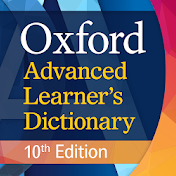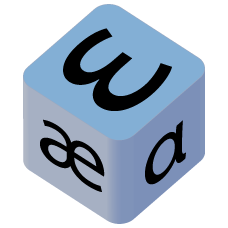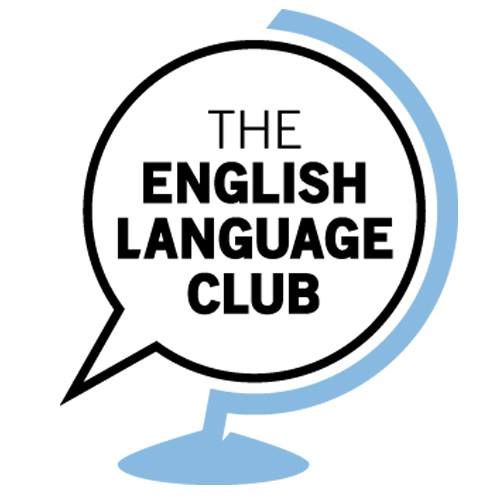Last Updated on July 30, 2023
Right here on Collegelearners, you are privy to a litany of relevant information on how to speak british accent for beginners, how to learn british accent step by step, how to learn british accent app, and so much more. Take out time to visit our catalog for more information on similar topics.
How to learn a british accent
Every accent or dialect comes with their own dialectal features which make it unique, this article should be the start of your journey of discovery with RP. This is not an exhaustive list but again here to start you on the right track to making a good RP accent happen! Here are some of the signature sounds for RP that you should keep an eye out for. I give more detail on my source, Paul Meier’s Accents and Dialects for Stage and Screen below.
The aspirated, released, plosive ‘t’
Did that sound like gibberish? I know, but it’s less complex than you might think. Aspirated means there is a lot of air moving through it, released means we aren’t holding it in and plosive means it is at the front of the mouth exploding outwards as you say it. English RP speakers treat this sound more sharply than almost any other group of English speakers. Some words to think about: Better, Lot of, shatter, motive etc.
Fancy or Farncey. Dance or Darnce, Plant or Plahnt?
Yes, the inexorable question or the short or long ‘a’ sound. The overarching rule here is that if your ‘a’ sound, sounds weird – it is probably weird. Carrhhht, for example, isn’t going to be right for ‘cat’ so have a play around with it. Dance for example would need a longer and more open ‘a’ sound as opposed to the short ‘a’ you would get in General American for the same word. It is also a question of class. RP being an upper-class accent my general advice would be to experiment with elongating rather than shortening sounds. However, if you are ever confused check with a pronunciation dictionary or ask a real-life RP speaker. Googling Steven Fry or listening to one of his audiobooks is a great place to start. Words like: cant, plaza. Plant, dance all have the longer sound versus cat, lamp, bag or parrot which have a shorter sound.
Watch the lot and cloth
If you’re an American – this is going to feel super weird but you want to make the vowel sound in words like lot and cloth in the back of your mouth rather than the front with lots of lip rounding. You may feel very silly here but give it a go! Knowledge, collar, want, fox etc are all good practice words.
The linking ‘r’
This is very tricky, especially for Americans. What if I told you that RP speakers may not say every ‘r’ in a word as written but will also occasionally add an ‘r’ sound where there is not one written? Wild right. For example, an RP speaker would say library as: “Li-bry” as opposed to a General American speaker who would say: Li-bra-ry. While at the same time an RP speaker would say ‘Here is’ as: ‘Here-r-is’ using an ‘r’ sound to link the flow of one word into another. While the American speaker would say: “here -is’ as separate sounds. Now you can get into the weeds as to why by digging into some linguistics (if that is your jam) what you need to know is there is a small linking ‘r’ sound in these words and phrases: there are, her eyes, fear of etc. (This is one you might want to work on with a voice coach, it can get a little tricky! )
Common Mistakes
#1 Don’t get too fancy – fancy pants! Listen, it’s not 1932 and you are not Katherine Hepburn. I know, I know – I wish I was too but at the end of the day we are going for a more modern approach here so record yourself on your phone and listen to yourself! If you sound like Kate McKinnon in the video below. Keep practising!https://www.youtube.com/embed/LQKVIJnfiNM?feature=oembed
#2 Those nasty ‘r’s: If you have a rhotic dialect yourself you are going to find it very tricky to drop it. ‘R’s and ‘L’s are arguably the toughest sounds to deal with as an English speaker. I would highly recommend you seek out a voice coach to give you a hand on this front if you’re struggling.
#3 Emphasis: Remember that the RP speaker tends to emphasise fewer words in a sentence than an American. Also usually, they use a higher pitch to show the significance of certain words, rather than more volume like you would see an American do. Check out Steven Fry here:https://www.youtube.com/embed/da10ANDsy6s?feature=oembed
You can hear how he emphasises ‘Princeton’ not with volume, but with a slightly higher pitch on the word to give it significance. Going the other way will give you away as a non- RP speaker!
Further Reading
In my humble opinion, there is one person who stands head and shoulders above the rest when it comes to teaching dialects in book form. His name is Paul Meier and his book Accents and Dialects for Stage and Screen is absolutely fantastic. I will mention at this stage I am not endorsed by Paul and neither is StageMilk. His book is simply the best resource for learning dialects that I have come across. He goes through each signature sound of an accent, builds it into words and from words into full monologues. He also runs the Idea website which stores audio recordings of real-life dialect speakers and allows you to practice saying what they do. It is a really wonderful resource and you should check it out.
Practice Sentences
All of these come from Paul Meiers excellent book. Try the following sentences in your new RP accent!
- A lot of better writers print a lot of little words
- An enormous tornado tore up the store this morning
- In Paris, Harry shot a sparrow from his carriage with an arrow
- The Shah of Persia insists that Maria is never to abandon her uncle
- Snow flurries fall fast and always when the ground is frosty
- I assume we all concur on the importance of the matter.
You can listen to me have a go at them here:Audio Player00:0000:00Use Up/Down Arrow keys to increase or decrease volume.
As you can hear I am not quite perfect, but I am working on this accent all the time and I hope this inspires you to do the same!
Conclusion
There you have it, folks, a quickfire run down of the RP accent! As you can see, it isn’t as simple as just barging in! Any accent takes a lot of work, practice, repetition and is best done under the supervision of a great dialect coach. Have a google for great dialect teachers in your area. In my humble opinion, Linda Nichols-Gidley at Voco Vox is one of the best in Australia as well as Amanda Mitchell, Paige Walker and Felicity Jurd, but there are many others around the world who can help you achieve your dialect dreams! If you want to practice working in accents with StageMilk check out our online scene club – where you can work on scenes and monologues every month with great actors from around the globe!TweetSharePin

About the Author

Patrick Cullen
Patrick is an actor, writer, comedian and podcaster based in Sydney, Australia. A graduate of the Actors Centre Australia in 2014, Patrick has been working in film, TV and theatre across Sydney and Brisbane ever since. Patrick can be found glued to test cricket in bars across the land.
Before you learn how to speak, you’ll need to learn how to listen. Some sounds can be hard to tell apart when you’re listening. Did the speaker sleep or slip? Did he hurt his chin or his shin? If you can hear the difference, it will be easier to speak the difference.
There are many guides to get you started in learning to listen. We have some great articles here about learning to listen from movies, songs and music and podcasts. You can also find listening exercises online, like this one from Rong-chang.
The pronunciation practice at Many Things is really slick, especially its huge selection of lessons on minimal pairs. Minimal pairs are pairs of words like sleep and slip, that are only different by one sound. You can click on each word to hear a complete sentence with each, then quiz yourself in the second box and click the correct answer.
When you want to listen to authentic English instead of pronunciation exercises, you can watch videos on FluentU.
FluentU takes authentic videos—like music videos, movie trailers, news and inspiring talks—and turns them into personalized language learning lessons.
You can try FluentU for free for 2 weeks. Click here to check out the website or download the iOS app or Android app.Try FluentU for FREE!
2. Learn with the Best English Pronunciation Dictionaries Online
You probably already use a dictionary to translate English words, but online or digital dictionaries can offer many additional benefits, including pronunciation guides. These kinds of dictionaries can be one of the most useful tools you can have for practicing English pronunciation—best of all, they’re available online for free!
Here are some of the best pronunciation dictionaries you can find and use online.
Google Translate
Website | iOS | Android
You may have already used Google Translate during your English studies. Google Translate is an easy-to-use translator that also provides pronunciation guides for single words and whole sentences. As soon as you get to Google Translate’s interface, you can look up any word and it will give you a number of definitions and an audio pronunciation.
If you’re just looking for pronunciation help, type in Google search “how to say (insert word).” You will get both an audio pronunciation guide (which you can slow down) and a visual guide that shows how your mouth should move when saying the word.
FluentU
Website | iOS | Android
While studying English, you might want to learn and experience the word in a more “natural” way. You might want to listen to the word being used by someone in a real-life scenario.
FluentU and its many video lessons can let you do just that! The program comes with its own kind of pronunciation dictionary, but with a few extra features.
Every video lesson in FluentU comes with special interactive captions. You can click on any word and instantly listen to its pronunciation and learn its definition; at the same time, you can also see and hear the word being used in different videos.
Because FluentU uses real-life videos, you can listen to and learn a word while it’s being used in context. In-context means that you know and think about all the other factors involved, so for the words you learn in FluentU, you get a lot more information about them.
Forvo
Website | iOS | Android
Forvo is a user-generated pronunciation guide in which native speakers submit audio clips of themselves saying certain words or phrases. You can look up a word, learn its definition and listen to how different people from different places say it. There are also pronunciations for whole sentences and phrases as well!
Forvo is well-liked because real people are the ones speaking the words. You can also see how certain speakers are ranked in their pronunciations; the pronunciations with the most likes may be the ones you should focus on.
Because the audio submissions can come from all over the world, you can listen to how the same word is said in different regional accents; the importance of this will be discussed in more detail later on.
Merriam-Webster Dictionary
Website | iOS | Android
Merriam-Webster is also known as “America’s most useful and well-known dictionary.” It’s no surprise then that it’s here on this list! The dictionary offers detailed definitions and information about the words you look up, as well as clear, good-quality audio pronunciations.
You can also download the free app version of this dictionary, which comes with some special features. With the app, you can search for words by speaking them out loud into your device’s microphone—this is great for when you don’t know how to spell a word, but it’s also good speaking practice. If there are any words that interest you, you can save them into your own “favorites” list.
WordReference
Website | iOS | Android
WordReference is a helpful multilingual dictionary. It supports translations for a lot of languages, so if your native language is included, you can find words in English by writing it out in your language, or search for English words and get translations in your language. This is very helpful when you want to make sure you’re getting the right translations.
WordReference also lets you listen to audio pronunciations in different English accents, more than many other dictionaries. Most online dictionaries may just offer one British pronunciation and one American pronunciation, but WordReference also specifies other specific accents such as Irish, Scottish, American Southern and even Jamaican. After you look up a word, you can click on the “Listen” button to pick the accent you want to hear and change the speed of the audio.
Oxford Learner’s Dictionaries
Website | iOS | Android
Oxford’s online dictionary, provided by the well-respected Oxford University Press, is a great resource for beginner learners. Sometimes, dictionaries can offer a lot of information that can make things confusing—Oxford’s dictionary takes out a lot of the confusion and gives you the main things you need. The definitions are written in an easy-to-understand manner and you get plenty of example sentences that show you how the word is used.
The dictionary has two pronunciation options: you can listen to the word spoken in British English or in American English. The pronunciations are done by different male and female humans (not robots!), which can be great for your listening practice.
Collins Online Dictionary
This dictionary offers most of what the other listed dictionaries have, but with some extra audio features. Once you look up a word, Collins dictionary also provides audio pronunciation of the word in its different forms (such as in past tense or participle form). There are even audio pronunciations for the example sentences that show the word in use, which can be very useful when you want to practice speaking in whole phrases.
Website | iOS | Android
Collins dictionary provides slightly different definitions: the first “Collins” definition, the second “British English” definition and the third “American English” definition. With each definition section, you can hear either the British or American pronunciation of the word. In some cases, there may even be a video clip of a real person saying the word!
One thing to note is that the example sentence pronunciations are done by a text-to-speech robot instead of a human. However, the voice doesn’t sound too unnatural or strange, so you can still find these pronunciations helpful!
A dictionary is a study tool that you’ll always want to have around when you’re studying and practicing English. If you ever learn a new word and aren’t sure how to pronounce it, then a dictionary with audio functions can give you immediate help.
3. Notice how your mouth and lips move.
When you speak, you move your mouth. How you move your mouth affects how you pronounce a word.
The first step to correcting your mouth shape is to notice it and pay attention. There are a few ways you can check that your mouth and lips are making the correct shape:
- Use a mirror. This is by far the simplest way to tell what your mouth is doing while you talk.
- Put a finger in front of your lips (like you’re saying “shh”). As you speak, don’t move your finger. You should feel your lips moving away from or pushing against your finger.
Watch other people and notice the shape their mouth and lips make when they talk. Try following along with your favorite TV show or movie. Can you repeat the faces and sounds that the actors are making?
There are guides and pictures online that will help you learn how to move your mouth. Sounds of English has some good explanations for pronouncing specific words. This guide is for people making 3D animations, but the pictures are a great start to understanding how your mouth should look when you speak.
You can also find great videos showing how to properly form the mouth and lip shapes when you’re speaking, like this one from Georgie Harding:
Play
Feeling stiff? Loosen up your mouth and tongue and get ready to practice your speech with this fun warm-up exercise from Howcast!
Play
4. Pay attention to your tongue.
The main difference between rice and lice is in your tongue. When you speak, you move your tongue to make sounds. You probably didn’t even notice that, since you do it without thinking. To improve your English pronunciation, it’s a good idea to check what your tongue is doing.
Some difficult sounds for non-native speakers to make are the letters “L” and “R,” and the sound “TH.” Pronouncing them correctly is all in the tongue!
- To make the “L” sound, your tongue should touch the back of your front teeth and the top of your mouth, just behind your teeth. Try it now: Say the word “light.” Say it a few times. Feel where your tongue is in your mouth. Make sure it touches the top of your mouth. For further practice, here’s a handy resource: scroll down for a free worksheet with L sound sentences and phrases specifically chosen by our linguist. It includes practical tips too that you can apply right away to improve your L sound pronunciation.
FREE WORKSHEETTO HELP YOU FEEL OUT THE DIFFERENCE BETWEEN THE LIGHT L AND THE DARK L SOUNDS!Get the free 2-page worksheet and join 1,000+ subscribers who already receive tips on presenting their best selves – in English.
SIGN UP NOW!
- To make the “R” sound, your tongue should not touch the top of your mouth. Pull your tongue back to the middle of your mouth, near where it naturally rests if you weren’t saying anything. As you say the sound, your lips should be a little rounded. Try it now: Say the word “right” a few times. You should feel air blowing between your tongue and the top of your mouth as you speak. You should also feel your lips get a little rounder when you make the sound.
- Now for the “TH” sound. This one may seem strange if you don’t have a similar sound in your native language. To make this sound, put your tongue between your top and bottom teeth. Your tongue should stick out a little between your teeth, and as you push air out of your mouth, let some air escape between your tongue and teeth—that’s what makes the sound. Try it now: Say the word “think.” Repeat it a few times. Make sure you push your tongue between your teeth.
Now that you know where to put your tongue, can you hear the difference?
For a more detailed explanation on how to make those three sounds correctly, watch this video from the Woosong University:
Play
Or check out this one from Club English:
Play
There are many other pronunciation guides on YouTube, so look around for one that helps you master the sounds of the language!
If you can’t figure out what to do with your tongue to make the right sound, try asking someone. Ask them to say a word with that sound, then tell you where they put their tongue. They probably never thought about it before, either!
5. Break words down into sounds.
Words are made up of syllables, or parts. The word “syllable,” for example, has three syllables: syl-la-ble. Turning words into parts can make them easier to pronounce.
To check how many syllables a word has, place your hand flat just under your chin. Say the word slowly. Each time your chin touches your hand, that’s a syllable.
You can even write the word down in parts. Leave a space or draw a line between each syllable (every syllable should have at least one vowel: a, e, i, o, u, y). Now try saying the word. Say it slowly and pause after each syllable. Isn’t that easier?
If you’re having trouble with syllables, you can check out How Many Syllables. This website shows you the syllables in any word you look up, and even shows you how to pronounce it.
6. Add stress to sounds and words.
English is a stressed language. That means some words and sounds are more important than others. You can hear this when you say a word out loud. For example, the word “introduce” is pronounced with a stress at the end, so it sounds like this: “in-tro-DUCE.”
Sometimes where you put the stress in a word can change the word’s meaning. Say this word out loud: “present.” If you said “PREsent,” you are talking about a noun that means either “right this moment” or “a gift.” If you said “preSENT,” you are talking about a verb that means “to give or show.”
There are rules for where the stress goes in each word. Here’s one rule:
- Most two-syllable nouns are stressed on the first syllable, and most two-syllable verbs are stressed on the second syllable.
That’s just like the word “present.” Here’s another example: the noun “ADDress” is the place where you live, and the verb “addRESS” is to speak to someone.
If this all sounds too complicated, don’t worry about memorizing all these rules—the best way to learn is by listening and practicing. Remember that most native English speakers don’t know the rules either, they just say what “sounds right.” With enough practice, you can get what sounds right too.
This video about six common English mistakes goes over word stress in detail in the first point:
Play
Keep watching the rest of the video for other useful tips for avoiding some of the most common English learner mistakes.
Watch this video from mmmEnglish for more information about syllable stress in English:
Play
Sentences have stresses too; some words are more important, and are said with more clarity and strength than the rest of the sentence. Try reading this sentence aloud: “I ate some toast with butter in the morning.”
The sentence should have sounded like this (the bold words are the stressed ones): “I ate some toast with butter in the morning.” Notice how you slow down every time you get to an important word, and quickly pass over the less important ones?
Keep practicing by reading out loud, having conversations and listening well to where others place stress when they speak.
7. Ask yourself which dialect of English you want to learn.
When you speak English, do you want to sound like you’re from America or England? Australia or New Zealand? Maybe Canada or South Africa.
Choosing your dialect of English is one of the first decisions to make on your English-learning journey. First of all, it will determine much of the vocabulary you learn. For example, English speakers in Ireland use different terms for certain things than English speakers in the United States—especially when it comes to slang.
Second, this choice will drastically affect your pronunciation.
The two most common types of English for ESL students are probably American English and British English.
Choosing which type will affect how you pronounce sounds. For example, in America, the “r” sound at the end of a word is much harsher.
And when a “t” appears in the middle of a word, Americans often pronounce it as a “d,” while the British pronounce it as a hard “t.” Think of words like “water,” “whatever” or “lighter.”
That’s just the beginning. I could go on and on!
Choosing between American and British English will also drastically alter how you say words like “aluminum,” “schedule,” “garage” and “mobile,” just to name a few.
Once you’ve chosen which dialect of English you want to take on, base your studying methods and tools on that decision.
For instance, if you want to learn American English, you wouldn’t want a British language exchange partner, would you? You’re going to emulate the sounds you hear, so you want to find people and resources that will feed you the right accent.
Watching movies and TV shows are fantastic ways to learn English and pick up accents. I particularly love watching TV series, because you have hours of content, and you learn to understand characters’ accents over time.
If you’re looking for a British TV show, I recommend “The Crown,” a drama about Queen Elizabeth II. I also love “The Great British Baking Show.” This reality show is lighthearted and fun to watch, and you’ll pick up modern slang.
How about English shows? “Friends” is a classic option for learning English, and many Americans will love to talk about it with you. “Brooklyn Nine-Nine” is a sitcom that’s currently on the air that centers around cops (policemen and women) in New York City.
You can also find learning materials that expose you exclusively to your desired dialect. Take apps, for example.
If you want to learn British English, LearnEnglish Sounds Right will provide an English pronunciation guide for people wanting to attain a British accent, and you can download it for your iOS or Android device.
ELSA Speak: English Accent Coach is a great app for learning how to speak like an American. Download it at the Apple or Google Play store.
You can also use resources besides apps, and they can be just as useful in helping you get the dialect you want.
As you can see, your choice of dialect will affect every other decision you make regarding English pronunciation!
8. Exaggerate certain sounds (make them bigger).
Anyone who has acted in the theater knows about exaggeration.
Have you ever been on stage and made a facial expression or reacted to someone else’s line, only for your director to yell, “Do it bigger!” On the stage, you have to exaggerate to appear normal to the audience.
English pronunciation is the exact same way.
Depending on what your native language is and which dialect of English you’re studying, you’ll find certain sounds to be difficult. Actually, I think every ESL student I’ve met who is learning American English struggles with the American “r” sound!
So how do you master a tricky sound like this?
Exaggerate. Exaggerate the sound until you feel ridiculous. Exaggerate until you’re sure it’s so over the top that people are going to make fun of you.
Are you exaggerating to the point that you feel stupid? Then you’re probably on the right path.
If you’re super over the top in your pronunciation, you’ll become more and more aware of the shape of your mouth and the placement of your tongue when you make that sound.
Believe it or not, exaggerating these sounds will likely make it easier for native speakers to understand you. You may think you sound corny because you aren’t used to making these sounds. But for a native speaker, you’ll sound way more authentic than a foreigner who is shy about these sounds.
What’s the goal? Eventually, you will be so used to the shape your mouth makes that you won’t be conscious of exaggerating, and you won’t be thinking of English pronunciation rules as you speak. And that’s when you know you’re on the path to fluency.
9. Write out difficult words by their sounds.
Having trouble with certain words? Try writing them out.
No, not just the word. Try writing it out phonetically (by their sounds instead of their spelling).
Let’s say you’re struggling with the word pizza. Write it out phonetically: piːtsə.
When you look at the phonics, you can see that the double-z is pronounced like a “ts.”
Try making flashcards. Write the word on one side, then spell it out phonetically on the other side. If it helps, you can highlight the letters on each side that you’re testing yourself on. (This can be especially useful for visual learners!)
Writing things out phonetically can be difficult, especially if it’s in your second language. If you need help, visit EasyPronunciation.com. Type in the word or sentence you need help with, and the website will transcribe it phonetically for you. (Bonus—it lets you choose between American and British English!)
10. Write down what you hear.
Want to master English pronunciation? Sit down and listen. Listen to someone speak and write down what they are saying.
You might be thinking, “Hey, I’m here to practice English speaking, not listening!”
However, listening is an excellent way to improve English pronunciation.
In my high school French classes, we had to take dictation (write what the teacher said) every week. The teacher spoke for 20 minutes, and we had to write down exactly what she said. Trying to decipher her accent and write down what we heard made me understand French spelling and pronunciation better.
Don’t have an English teacher who wants to talk aloud for 20 minutes at your disposal? There are plenty of ways to find a resource!
EnglishClub is a great dictation website, regardless of your learning level. Choose from elementary, intermediate or advanced dictation.
You’ll listen to the dictation once at normal speed. Then a second time at a slowed-down speed so you can write it down. Listen for a third time at a normal speed. Then check your answer.
YouTube also has many options to practice your listening and writing skills. Get started with Speak English with Vanessa’s Dr. Seuss dictation video:
Play
You can also watch a scene from a TV show or movie and write down what you hear. If you’re watching on a service that provides subtitles, play the scene again with subtitles to check your work.
If you recognize difficult sounds when you hear them, it’s likely that you’ll learn how to say them.
11. Practice with tongue twisters.
When speaking English, do you struggle with sounds that are similar? Like “sh” and “ch,” “t” and “th” or the short and long “e” sounds?
Don’t worry, you’re not the only one. Not by a long shot.
Wondering how to improve your English accent in a way that’s a bit more entertaining? Tongue twisters can be a fun (but tricky!) way to practice differentiating between two sounds.
Tongue twisters are poems that can be hard to recite because a lot of the sounds are similar. In English-speaking countries, people say them just because it’s funny when you mess up and sound silly. And it’s satisfying when you finally master the poem!
Here are a few examples of popular, effective English tongue twisters:
Want to practice the “s” and “sh” sounds? Here’s one:
She sells seashells by the seashore.
That’s a very famous tongue twister. But once you’ve got that down, try adding on a few less well-known lines:
The shells she sells are sea-shells, I’m sure.
For if she sells sea-shells on the sea-shore
Then I’m sure she sells sea-shore shells.
Alright, now let’s try one to practice the “cl” and “cr” sounds:
How can a clam cram in a clean cream can?
And now one for the “sh” and “ch” sounds:
If a dog chews shoes, whose shoes does he choose?
Want to practice different sounds with tongue twisters? Take a look at this list here.
You can also hear some tongue twisters spoken by a native English speaker on Rachel’s English (and see that even native speakers can have trouble mastering these tricky twisters!):
Play
12. Use pronunciation podcasts and videos.
There are some excellent video and audio guides on English pronunciations that you can use to improve. The English Language Club has videos that show how to make different sounds in English. Rachel’s English has friendly videos on how to speak and pronounce American English in everyday conversations.
If you like podcasts better, Pronuncian has over 200 audio files that help with everything from pronunciation to stress and pitch (how you raise and lower your voice while you speak).
If none of these are what you’re looking for, there are many more to choose from. Find the one that’s right for you.
13. Record yourself.
One way to tell if all your practice is working is to record yourself with a camera. Use a camera and don’t just a sound recorder because it’s important to see how you speak, not only hear it.
You don’t need to download any special software to record yourself; most computers and mobile devices have built-in video recorders. You can use PhotoBooth on a Mac or Movie Moments on a Windows computer. The specific programs change with time (the Movie Moments program, for instance, might not be available anymore by the time you read this) but as long as a computer has a camera, you should be able to record videos with it. Your phone or mobile device also has a video capturing app, usually as part of the camera app.
Compare your recording to someone else saying the same words or sounds. Find a video of your favorite part from a movie, like this clip from “Earth to Echo.” Choose one or two sentences and record yourself trying to match the stress, tone and pronunciation of the video. Then you can compare the two and see what you did differently, and try again.
Ask a friend or watch a video to check. If your pronunciation doesn’t sound the same, ask yourself some questions: Are you moving your mouth the right way? Is your tongue in the right place? Are you stressing the right part of the word? Use everything you learned in this article so far!
14. Practice with a buddy.
As always, “Practice makes perfect!” And it’s easier to practice with a friend. Find someone to practice pronunciation with, either in person or through online communities like Language Exchange or InterPals.
Practicing with a buddy (friend) will give you a chance to try everything you learned, and learn new things from each other. Plus, it’s fun!
15. Speak as much as you can.
If you don’t speak often, you can become nervous when it’s finally time to open your mouth and say something in English.
It’s like playing basketball. You might be good at running, dribbling and passing. But you never shoot the ball.
You know how to shoot the ball. You watch other people do it all the time. But you’ve never done it.
When it’s time to play and you get a chance to shoot, it would be hard. Plus, you’d become so nervous by doing something new in front of other people that your nerves could paralyze you.
It’s the same with speaking English. Not only do you need English pronunciation practice, but you need to get over your nerves so that you feel comfortable speaking in front of others. Nerves can lead to a lot of mistakes, especially regarding pronunciation.
Try making a rule for yourself: You must speak English to yourself at home. To start, try just narrating what you’re doing when you’re cooking dinner or getting ready for bed.
Promise yourself that you’re going to speak aloud for at least a few minutes per day.
Remember, practice makes perfect!












